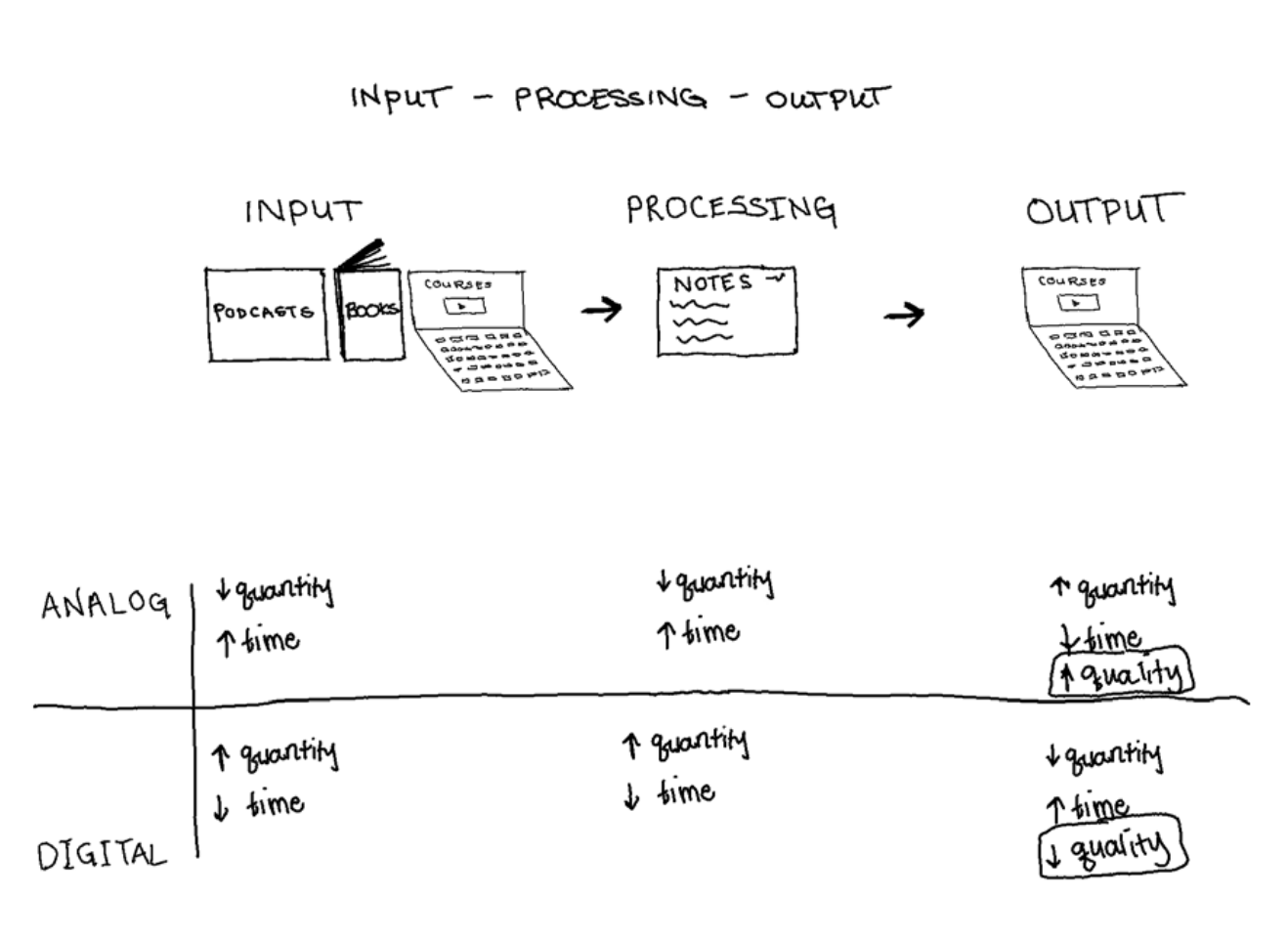# Notecards’ Limited Space Force Unlimited Combinations of Thought
I (Scott P. Scheper) am not a fan of synthetic atomicity. Take for instance, the previously mentioned atomic design methodology which entails thinking of website components as atoms, molecules, organisms, etc. [⇐ Atomic Workflow]. Such a paradigm overcomplicates the already overcomplicated field of web development. Digital Zettelkasten workflow warriors have jumped on this bandwagon, with people synthetically trying to make their notes atomic by arbitrarily breaking them into smaller parts. However, with most digital Zettelkasten systems, there’s no actual size constraint, such as a character limit, like one would find in Twitter.
[…]
See Grappling (within Pair Programming) as an example for such a limit.
> […] I (Ward) like to actually sit down with people and program at the limits of our abilities together, this pairs-programming, and you can kind of see into each other’s heads and see learning strategies and test strategies and so forth. **I would ask myself the question – in that hour of programming together, how many minutes were we grappling with problems that we could explain to the customer?** And our customer would say I’m glad you were Grappling with those. I’m happy to be paying you to think through that kind of Decision. […]
facilitate | BrE fəˈsɪlɪteɪt, AmE fəˈsɪləˌteɪt |
Notecards are different. There is an actual, physically limited, space into which one must condense thoughts [⇒ Synopsis]. The limited notecard space forces true atomicity, unlike inadequately implemented digital notetaking apps. (p. 171)
~
Scott P. Scheper, Antinet Zettelkasten (San Diego, CA: Greenlamp, 2022), pdf ![]() , p. 171–172)
, p. 171–172)
“Atomic Design Methodology | Atomic Design by Brad Frost,” accessed July 15, 2021, http://atomicdesign.bradfrost.com/chapter-2/.
[…] scholars studying the field of knowledge argue that atomic knowledge (“dismembered” into notecards) creates combinatory power by way of “links and cross-references” that allow users to “shift their cognitive energies (newly relieved of the burden of memorization) to processing information.”
Alberto Cevolini, ed., Forgetting Machines: Knowledge Management Evolution in Early Modern Europe, Library of the Written Word, volume 53 (Leiden ; Boston: Brill, 2016), 16.
The shift in cognitive energies does not happen because one is completely relieved of having to memorize anything (as in the case of storing thoughts in a digital notetaking app). Rather, with analog systems, the shift happens because you’ve actually stamped the knowledge into your mind by way of neuroimprinting the knowledge on your mind. This provides you with a working memory of knowledge you can carry with you as you read more material. The name of the game isn’t about offloading thoughts [⇒ Offloaded Brain]; it’s about neuroimprinting thoughts. This feature, combined with the character limits of notecards, is a great advantage of analog systems. (p. 171–172)

Input – Processing – Output
It’s a paradox. The slower pace required to use an analog Zettelkasten results in a decrease in the number of items put into the system; it simply takes longer to add the same amount of information one might add to a digital system. The same applies to the processing of the information put into each system. With the analog system, more time is required to convert the material you read into knowledge by adding your own reformulations and reflections—something not commonly undertaken in the digital versions.
Yet here’s where the paradox emerges. The workflow of the analog system (which takes more time to consume and process less information), actually results in producing a greater quantity of output in less time, compared with digital systems. Also, the quality of the output outshines output produced by digital notetaking systems.
There are two key factors that enable the paradoxical occurrence of greater work output from an analog system that slows work down: (1) neuroimprinting enables a more robust working memory when writing and creating output, and (2) the character limit of analog systems enable combinatorial possibilities in perpetuity that thereby enable more content to be generated from the same units of knowledge (namely, from the same notecards). (p. 173)
⇒ CRC Card